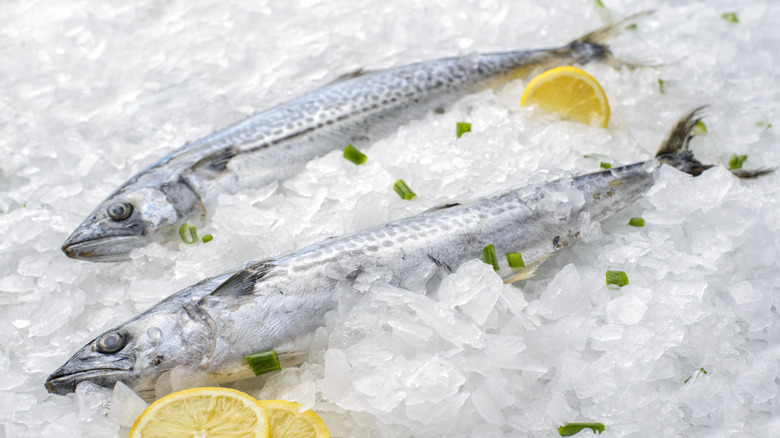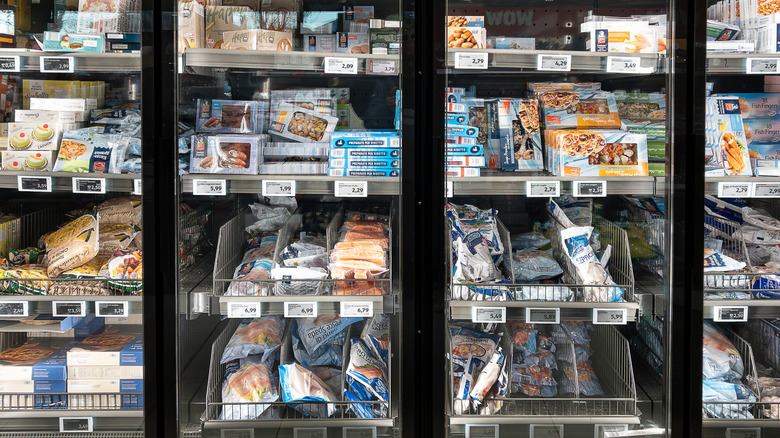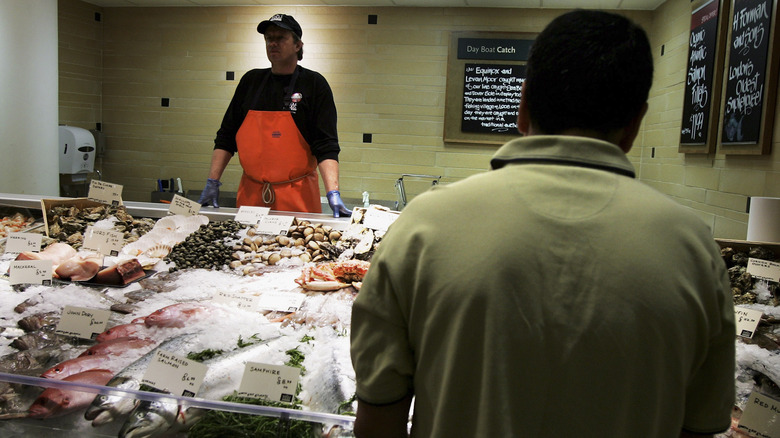What To Look For When Buying Quality Frozen Fish
When opting to make yourself a fabulous dinner at home, it's important to know dos and don'ts for your protein of choice. When you are craving fish, of course fresh is best, but if you're low on time or trying to stick to a tighter budget, frozen fish can make a great dinner — as long as you can identify the best kinds. For tips on navigating through the seafood counter and sourcing high quality frozen options like a pro, Food Republic sat down with Juan Cabrera, the executive chef at The Restaurant at North Block, nestled in Napa Valley, California.
The first thing Cabrera looks for in the frozen seafood section is the fish (be it filets or steak cuts) that has been "individually vacuumed-sealed, and [there are] no ice crystals or freezer burn." According to the expert, looking out for the ice is especially poignant as "freezing your fish can slightly affect texture ... it can make fish a little mushier due to the ice crystal formation." Cabrera explained that outside of choosing fresh over frozen when you can, sourcing locally and sustainably, like avoiding buying overfished species, should also be high on the priority list when purchasing frozen fish.
The best types of fish to buy frozen
Some of the best seafood options to buy frozen are salmon, scallops, and shrimp. Muscles and clams can also provide a tasty flavor profile after being frozen, as long as they were pre-cooked and placed in a vacuum-sealed container. "Definitely avoid frozen oysters and very flaky fish is a no as well" though, executive chef Juan Cabrera told Food Republic. These types of delicate seafood can completely lose their structure and texture once frozen.
Now, let's say you forgot to take your frozen seafood you out of the freezer in enough time to adequately thaw it via the fridge overnight (the preferred method), or to thaw in a sink of cold water, leaving you in a lurch come time to cook. There's no shame, we've all done it. In the event of this predicament, however, not every type of fish will do. The best kinds that can withstand going straight from the freezer to the frying pan, according to our expert, are salmon, cod, and tilapia.
When this is the case, Cabrera advised, "[Rinse] off the ice for safety; cook a few minutes longer to ensure [it's] cook[ed] through, [then] bake, steam, or pan sear with a lid to retain moisture". By removing excess ice, you're mitigating the way the ice crystals can affect your filet's texture once cooked. The expert recommended preparing the once-frozen fish with a robust tomato sauce (if using a store-bought jar, consider giving it a boost of umami with additional spices) to achieve the most flavorful bite.
Questions to ask the mongers behind the counter
When you want to order from the fresh seafood section rather than pick up something from the freezers, consider asking the fishmongers or employees behind the counter for assistance. If striking up conversation with a seasoned seafood professional is nerve-wracking, chef Juan Cabrera outlined easy questions for you to ask that help you deduce the quality of the available catch.
One of the top questions to ask is, "Was this frozen at some point?" If the answer is yes, then hopefully it was flash frozen. Flash freezing is common for transporting fish from the boats out at sea to market counter, and is also much better for the fish than if it were frozen regularly. The rapid decrease in temperature allows for smaller ice crystals, which are less damaging to the fish as it thaws.
Other great questions to ask for assessing quality include, "When was it caught or delivered?" and "Is it wild or farm raised?" Inquiring on the catching method can also give you answers regarding just how fresh the products really are. Line-caught seafood is much more sustainable for the environment, as it eliminates bycatch — it's also the ideal catching method for types of fish that become homemade sashimi. If raw seafood is on the dinner menu, these questions are especially important, so don't be afraid to chat with the pros.



